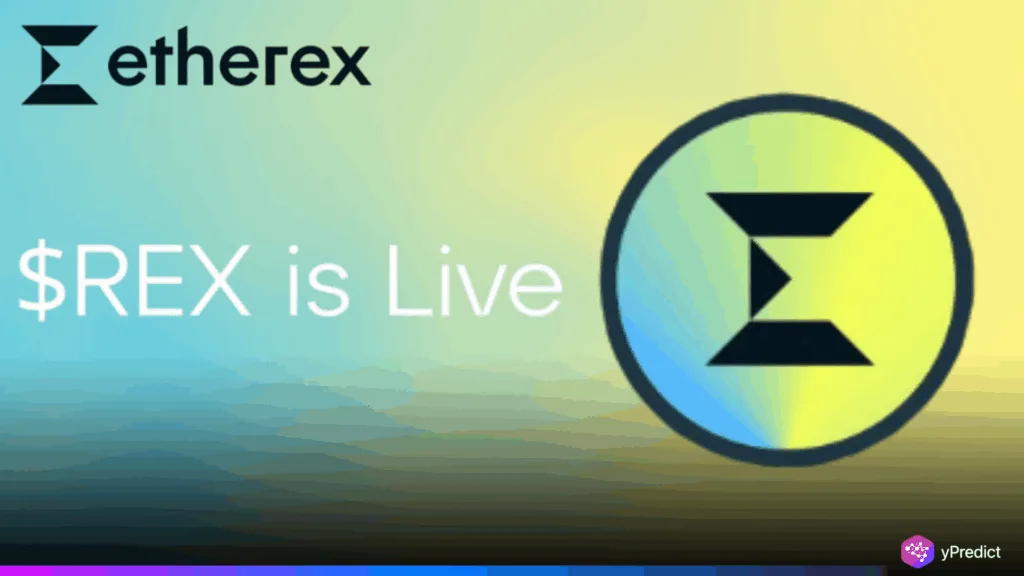
The Etherex launch has quickly turned heads across the crypto and AI sectors. The decentralized exchange (DEX), backed by Consensys, launched July 28, 2025, with its native token, the REX Token, on Ethereum Layer 2 Linea Network, and less than 24 hours later, the REX Token achieved a market cap of $213.5 million, asserting strong interest and immediate community adoption.
This launch wasn’t simply another token launch, but rather an unprecedented data-backed ramp-up, as Etherex, with its AI-enhanced analytics, is embracing user engagement and decentralized governance to make this platform more attractive than the majority of its DeFi competitors. Its integration of the Linea Network indicates how zkEVM technology can equip AI-enabled platforms to shift transactions faster, cheaper, and smarter.
zkEVM and AI Combine to Slash Costs and Enhance Speed
Linea Network, built with zero-knowledge Ethereum Virtual Machine (zkEVM) architecture, plays a central role in Etherex’s breakthrough. A 2023 study in the Journal of Cryptology confirmed that zkEVM can reduce transaction costs by up to 90% on Layer 2 solutions. Etherex leverages this speed not only to scale its exchange but also to power AI modules for real-time DeFi insights.
AI tools on Etherex dynamically adjust transaction fees, improve front-running protection, and automate risk detection. zkEVM and AI together provide almost instantaneous settlement time, which is essential for users who want to optimize their DeFi strategies. This combination allows Etherex to provide an experience beyond just an ordinary trading interface—it offers an intelligent ecosystem based on user behavior.
Decaying Fee Model Driven by AI-Powered Fairness
What truly sets the Etherex launch apart is its novel decaying fee mechanism. Instead of rewarding early insiders, Etherex utilizes AI to deliver community incentives across a range of transparent participation metrics. It also aligns with the increased demand for accountability and fairness in DeFi.
According to data from Dune Analytics, over 70% of DeFi users also prefer their DeFi platforms to have a priority on transparent tokenomics. Etherex answers this call. The AI systems track user engagement and adjust rewards accordingly; no pre-mines, no hidden allocations, and no backdoor advantages. The REX Token becomes a dynamic asset, adapting to real-time ecosystem activity through algorithmic governance.
Visual Symbolism Reinforces Etherex’s AI Vision
The marketing image for the Etherex launch, a glowing token suspended between two electrical plugs. It is a powerful visual reminder of the project’s themes of energy, connectivity, and smart automation. Not simply design, it’s a story. The visual cues indicate the vision of the Linea Network to achieve supercharged Ethereum scalability, leveraging AI capabilities at the protocol level.
This theme resonates with the broader trend of AI and blockchain convergence. This was done by introducing intelligence to each layer of its infrastructure. This is a clear signal to developers, investors, and users: AI is not an enhancement — it’s the base.
Community Reception Confirms Growing AI-DeFi Demand
The market’s immediate reaction to the Etherex launch has validated its AI-first strategy. Hitting a $213.5 million market cap within hours speaks volumes. Social channels and DEX dashboards lit up with activity. This demonstrates strong support for a model that replaces speculation with informed governance and transparent mechanisms. As other DeFi platforms continue to struggle with centralized control and unclear tokenomics, Etherex’s AI-infused approach finds resonance. The REX Token isn’t just another asset. It’s a symbol of how AI can elevate DeFi’s core promise—trustless, community-first finance.






